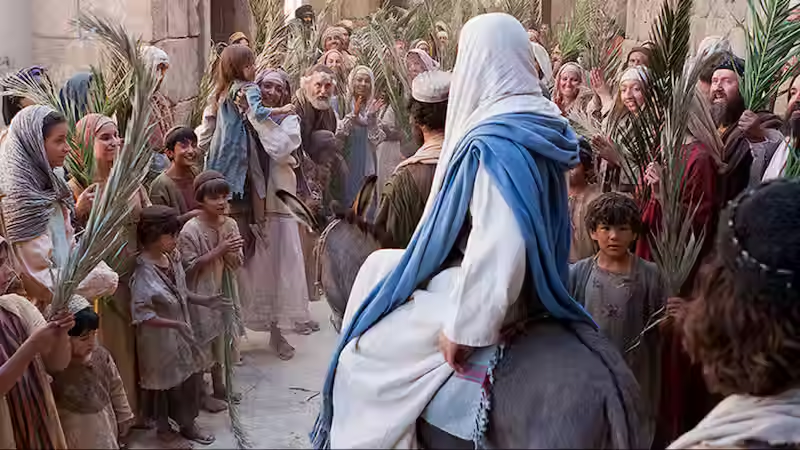Article 1: The Red Heifer – Ritual Preparation and Sanctification
- carl1jimenez
- May 14
- 5 min read

Article I of IV in the Series: The Final Prophetic Sequence
By: Carlos Jimenez
This four-part article series will examine the critical eschatological components that are foundational to understanding the prophetic timeline concerning the Third Temple and the rise of the Anti-Messiah. The series will unfold as follows:
The Red Heifer – Ritual Preparation and Sanctification
The Seven-Year Treaty of the Anti-Messiah
The Anti-Messiah's Betrayal of the Covenant and Desecration of the Third Temple
The Final Events: What Follows the Anti-Messiah’s Desecration and the Great Tribulation
Each installment is designed to trace the prophetic sequence leading to the return of Yahshua the Messiah and the climax of this present age. These writings will emphasize the restoration of the Sacred Name, the enduring authority of the Torah, and the indispensable role of Yisrael in Yahweh’s redemptive plan.
In the Torah, the ordinance of the red heifer (parah adumah) stands as a uniquely profound ritual tied to the removal of tum’at ha-met, impurity brought about by contact with death. Unlike offerings for transgression or guilt, this commandment, given by Yahweh in Bamidbar (Numbers) 19, is classified as a chok, a decree of divine origin whose rationale transcends human understanding. Its enactment is neither symbolic performance nor ceremonial tradition; rather, it is a vital prerequisite for the restoration of Temple service in accordance with Yahweh’s sacred standards.
In recent years, renewed efforts in the land of Yisrael to identify a suitable red heifer have captured the attention of prophetic scholars and Temple restoration movements. This article will explore the Torah-based origin of the red heifer, its ritual requirements, its historical observance, rabbinic commentary, and its prophetic significance concerning the Third Temple and the end of the age.
1. The Torah Ordinance – Numbers 19:1–10
Yahweh commanded Mosheh and Aharon regarding the red heifer with specific instructions:
“Speak unto the children of Yisrael, that they bring thee a red heifer without spot, wherein is no blemish, and upon which never came yoke...” (Bemidbar 19:2)
This heifer must be:
Entirely red, with no hairs of any other color.
Without defect or blemish.
Untouched by labor, symbolizing complete sanctification.
The heifer was to be slaughtered outside the camp, a detail rich in theological meaning. This location emphasizes separation from the camp of Yisrael, a clear typology of bearing reproach outside the community (cf. Iḇrim / Hebrews 13:11–13). The priest overseeing the ritual would sprinkle its blood seven times toward the front of the Tabernacle, after which the entire animal, along with cedarwood, hyssop, and scarlet wool, was to be completely burned.
These three added elements possess deep spiritual significance:
Cedarwood – symbolizes strength and incorruptibility.
Hyssop – repeatedly used for purification rites (cf. Tehillim 51:7).
Scarlet wool – signifies blood covenant and sanctification.
The ashes from this burning were collected and stored for use in the “waters of purification,” applied to anyone defiled by death. This ritual is the only procedure in the Torah that purifies from corpse defilement without blood atonement, distinguishing it as a rite of sanctification, not expiation.
2. The Theological Function: Sanctification from Death
Contact with the dead rendered an individual ceremonially unclean (tamé), disqualifying him from participating in Temple worship. This state was not merely symbolic but represented the real spiritual pollution introduced by death, which itself is the direct consequence of sin (cf. Romiyim / Romans 6:23).
Thus, the ashes of the red heifer mixed with running water acted as a cleansing medium, a divinely ordained solution to overcome death’s contaminating power. The spiritual principle here is significant: Yahweh provides the means by which His people may be made clean to approach Him. While the Levitical priesthood facilitated the process, the origin and efficacy belong solely to Yahweh.
3. Historical Record and Rabbinic Insights
Historically, the red heifer sacrifice was exceedingly rare. Rabbinic literature, including the Mishnah (tractate Parah) and commentary from Rambam (Maimonides), record that only nine red heifers were prepared from the time of Mosheh until the destruction of the Second Temple.
The sages refer to this rite as a chok, admitting that its rationale lies beyond the scope of human reason. While many aspects of the Levitical code can be linked to themes of justice, holiness, or atonement, the red heifer stands apart as an act of obedience rooted solely in divine decree.
Maimonides noted:
“All the sacrifices are rational except for the red heifer — it is the most inexplicable of all statutes.”
4. Present-Day Preparations for Temple Purification
In recent decades, organizations such as the Temple Institute in Yerushalayim have been actively involved in identifying and breeding red heifers according to the biblical standards. These efforts are fueled by the belief that the sanctification of the priesthood and Temple vessels cannot proceed without the ashes of a ritually pure red heifer.
Challenges in this endeavor include:
The absolute requirement that the heifer be fully red, even two non-red hairs render it disqualified.
It must never have been yoked or used for labor.
It must remain free from any blemish or injury.
For those awaiting the Third Temple, the discovery of a qualified red heifer is not merely ceremonial but a prophetic signifier. Its ashes are required to purify the Kohanim (priests) before they can lawfully enter the Temple precincts.
5. Prophetic Implications: A Harbinger of the Final Temple
The red heifer plays a vital role in the unfolding of eschatological events. The prophet Daniel records:
“And he shall confirm a covenant with many for one week… and in the midst of the week he shall cause the sacrifice and the oblation to cease...” (Daniel 9:27)
This anticipated “covenant”, explored in depth in Article II, is connected to the restored Temple system. Before any sacrifices can lawfully begin, the priesthood and the Temple itself must be ritually sanctified, a process that requires the ashes of the red heifer.
Moreover, the apostle Sha’ul (Paul) speaks of a man of sin who will exalt himself:
“…so that he sits in the Temple of Elohim, showing himself that he is Elohim.” (2 Thessalonians 2:4)
Thus, the reintroduction of the red heifer ritual is not merely of archaeological or ceremonial interest. It signals the approach of a prophetic intersection, the time when the Temple will stand once more in Yerushalayim, when sacrifices will resume, and when the Anti-Messiah will appear to desecrate what is set apart unto Yahweh.
The Red Heifer as a Prophetic Catalyst
The red heifer represents more than ancient purity laws; it is a key prophetic instrument that bridges Yahweh’s requirements for sanctification with the final chapter of this age. Its reappearance and preparation serve as harbingers of the soon-coming fulfillment of Yahweh’s prophecies.
For those who honor the Sacred Name and uphold the eternal Torah, the restoration of this ritual reflects a growing urgency: the day of Yahweh draws near. As the ashes await their sacred function, the world moves steadily toward the unveiling of the Anti-Messiah, the Great Tribulation, and ultimately, the triumphant return of Yahshua the Messiah.
Stay tuned for Article II: “The Seven-Year Treaty of the Anti-Messiah: and the Rebuilding of the Third Temple"
By: Carlos Jimenez



Comments